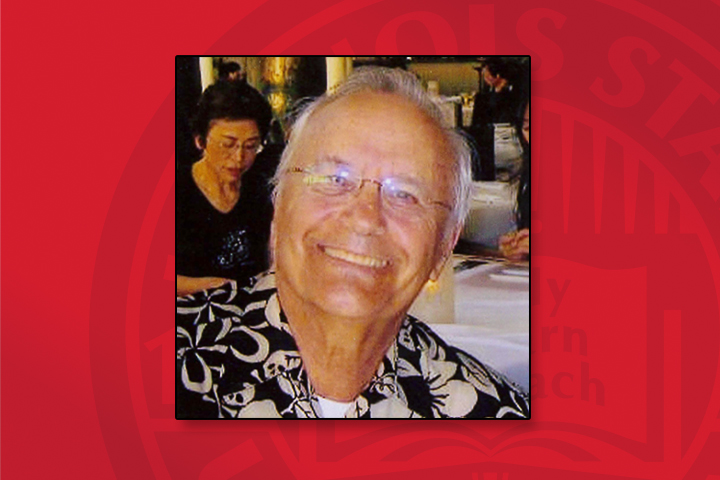In 1968, Savario “Sam” Mungo arrived at Illinois State University from the troubled urban schools of New York City.
Watching young teachers try, and fail, to teach in unfamiliar urban settings, Mungo came to Illinois State determined to find a way to help teacher candidates understand the challenges they would face.
“They needed to be able to walk into a classroom with some understanding of where the children were coming from,” said Mungo, who created the first urban teaching course in the College of Education during his first year.
To gain experience, Mungo took students to the west side of Bloomington. “That was as close to an urban center as we could get at the time, but it offered students a look at different backgrounds and culture,” he said. By 1970, Mungo established a program in Peoria that allowed students a nine-week urban community experience, and to teach nine weeks in an urban school setting.
The chance for students to approach classrooms in urban environments with urban experience was vital, noted Mungo. “Back then, a majority of our students came from small towns near campus. When they graduated, they had no experience in an urban setting, so they either did not apply for jobs in cities, or quickly felt overwhelmed, often leaving after a short time.”
The push to gain knowledge inside an urban classroom was more than a way to get students jobs. “The need for a cross-cultural awareness in teaching was not fully clear in the 1970s,” said Mungo.
The Peoria program continued, but Mungo still worried that teacher candidates were not comprehending what their students experienced. “I began to look for a place where white people might face some level of dismissal or discrimination that minorities face based solely on their color,” said Mungo.
His answer was Hawaii.
Mungo created an agreement with Hawaii’s Department of Education in Honolulu where students would teach for a semester in urban schools.
“It was an eye opener for my students, who were often dismissed as one of the minority ‘haole,’ or white people, on the island,” said Mungo. “For the first time, many of them began to understand what it felt like to be a minority. One of my students told me she was shocked when she tried to explain to her students her multi-ethnic heritage of German, Irish and English. They told her, ‘You are haole. You are the same.’”
In the classroom, teacher candidates found they had to prove themselves and win the trust of the students before teaching could even begin. “It was a lesson that told them, ‘You may know a lot of stuff. But you have to understand where your students are to teach them that stuff,’” said Mungo.
The program continued with Mungo and his wife Sharon supervising until 2005. Many of the teacher candidates they prepared decided to stay and teach in Hawaii or serve in urban districts within the contiguous U.S. In fact, one of their alums was recognized as Hawaii’s 2013 Teacher of the Year.
The foundation Mungo provided for urban teaching continues at Illinois State with the Chicago Teacher Education Pipeline. See a recently produced video commemorating the 10th Anniversary of the Pipeline below.
Throughout his time with Illinois State, Mungo encouraged cross-cultural learning for teachers and teacher candidates. He worked to create curriculum for middle schools across the nation that emphasized an integrated and urban view.
“It was my goal to teach teachers to be sensitive to the culture of others,” said Mungo. “You have to be able to understand others to help them learn.”


Peoria Urban Teacher Education Project
I was there in 1971-72. It was the highlight of my teaching preparation, culminating in a 30-year teac hing career.
Joseph Kerke
BSEd 1972
What a life altering experience! I was there in the spring, 1976 and ended up being a high school guidance counselor for 33 years. I still remember Sam telling us, ‘to be aware is to be alive.’ His energy was so engaging – how wonderful that he was able to enrich the lives of students over the span of so very many years.
One complaint: Peoria vs. Hawaii? Ouch!